Brachychiton populneus (Kurrajong)
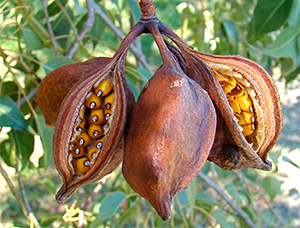
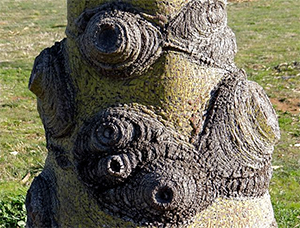
Origin of the species name
Brachychiton is Greek for short and here means short tunic, referring to the loose outer covering of the seed; populneus is Latin and means poplar-like, referring to the shape of the leaves.
Family
Sterculiaceae
Date planted
November 2010
Lifespan
Trees of this species take 35-50 years to reach mature height.
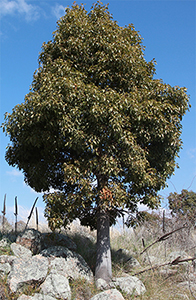
General description
This is a medium sized evergreen tree which is semi deciduous in summer. It has a short stocky trunk and thick, hard grey bark with shallow vertical fissures. It has a dense rounded crown of bright green leaves. It produces a woody boat-shaped fruit up to 5cm long with numerous irritating hairs on the inside among the seeds. Height 15m Spread 12m.
Natural distribution and habitat
The species is native to the western side of the Great Dividing Range from Albury to Townsville, Australia. It is a woodland species growing in both semi-humid and semi-arid conditions, in the upper catchments of rivers and on rocky hilltops throughout its range.
Conservation status
It is not regarded as a threatened or rare tree.
Planting pattern
Planted in a regular square grid pattern, set diagonally with B. rupestris plantings on the northern, north-eastern and western sides.
Uses
Limbs have often been cut off for stock fodder during drought. Indigenous people also used fibre from the inner bark for nets to catch both fish and birds. The seeds and the tap roots of young trees were used for food. It produces light and soft timber that has been used for lattices and as a softwood for interior furnishings. When in flower it has also been of use to make honey.
Further reading
Boland DJ, MIH Brooker, GM Chippendale, N Hall, BPM Hyland, RD Johnston, DA Kleinig, MW McDonald and JD Turner (2006) Forest Trees of Australia (5th Edition) CSIRO Publishing.
Brachychiton rupestris (Bottle Tree)
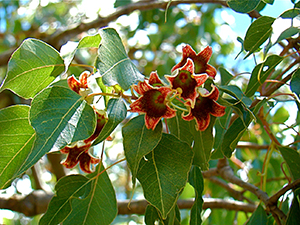
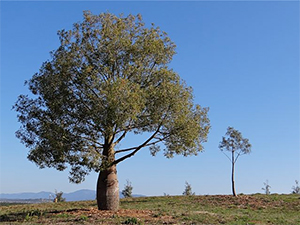
Other common names
Queensland Bottle Tree, Queensland-Flaschenbaum, Narrowleaf Bottle Tree.
Origin of the species name
Brachychiton is Greek for short and here means short tunic, referring to the loose covering of the seed; rupestris is Latin and means rocky and refers to the species' preferred habitat.
Family
Malvaceae
Date planted
October 2010
Lifespan
Trees of this species can live over 150 years.
General description
This is a medium sized semi-deciduous tree with smooth bark on a bottle-shaped trunk which can be as much as 2metres in diameter. Leaves may have entire margins or be deeply lobed and the bell-shaped flowers are yellowish in clusters at the ends of the branches. The green seed capsules mature to brown and split open to reveal about 10 deep-yellow seeds enclosed in fine brown bristles which are notoriously irritating to skin. Height 18m Spread 12m.
Natural distribution and habitat
The species is native to a limited region of central Queensland through to northern New South Wales, Australia. It is frequently found in dry scrub areas and occasionally extends into the edges of the nearby rainforest.
Special trees
The Arboretum's six large trees and 25 younger trees were translocated from Acland, a small town on the Darling Downs, about 160 km west of Brisbane, Queensland. In 1999, a mining company moved in to establish an open-cut coal mine and they wanted to expand it towards the town. They bought up most of the houses and these trees were removed from the gardens. Some arrived with geraniums still growing around the trunks. The large trees were planted on 27 October 2010 and all have survived, and grown.
Conservation status
Although it is not classified as a threatened species, it is an important tree in semi-evergreen vine thickets in south east Queensland that have been reduced by an estimated 75% since European arrival.
Uses
Aboriginals carved holes into the soft bark to use the significant amount of water stored between the inner bark and the trunk. The seeds, roots, stems, and bark have all been used as a traditional source of food for people and animals. The fibrous inner bark was used to make twine or rope and even woven together to make fishing nets.
Further reading
Boland DJ, MIH Brooker, GM Chippendale, N Hall, BPM Hyland, RD Johnston, DA Kleinig, MW McDonald and JD Turner (2006) Forest Trees of Australia (5th Edition) CSIRO Publishing.
